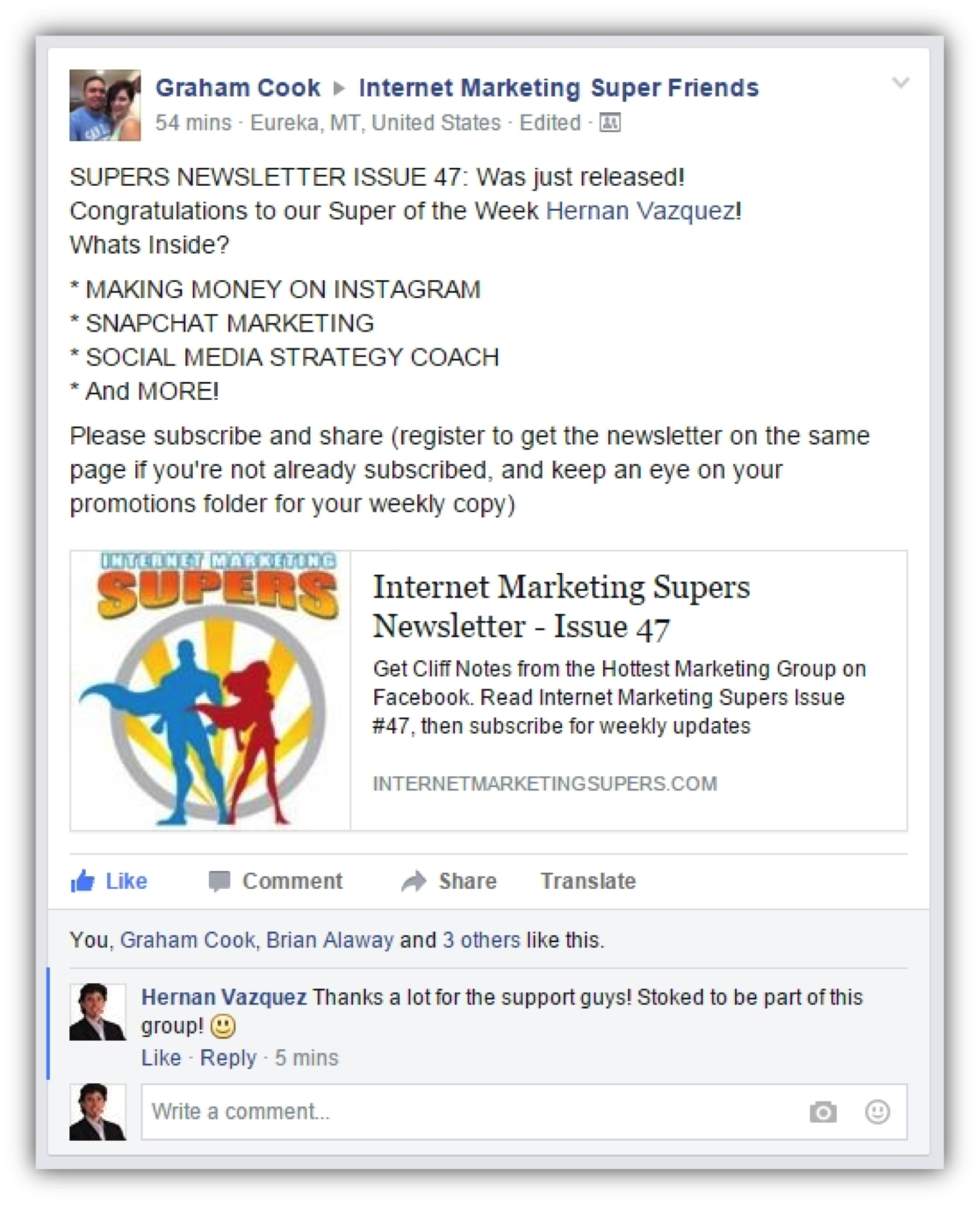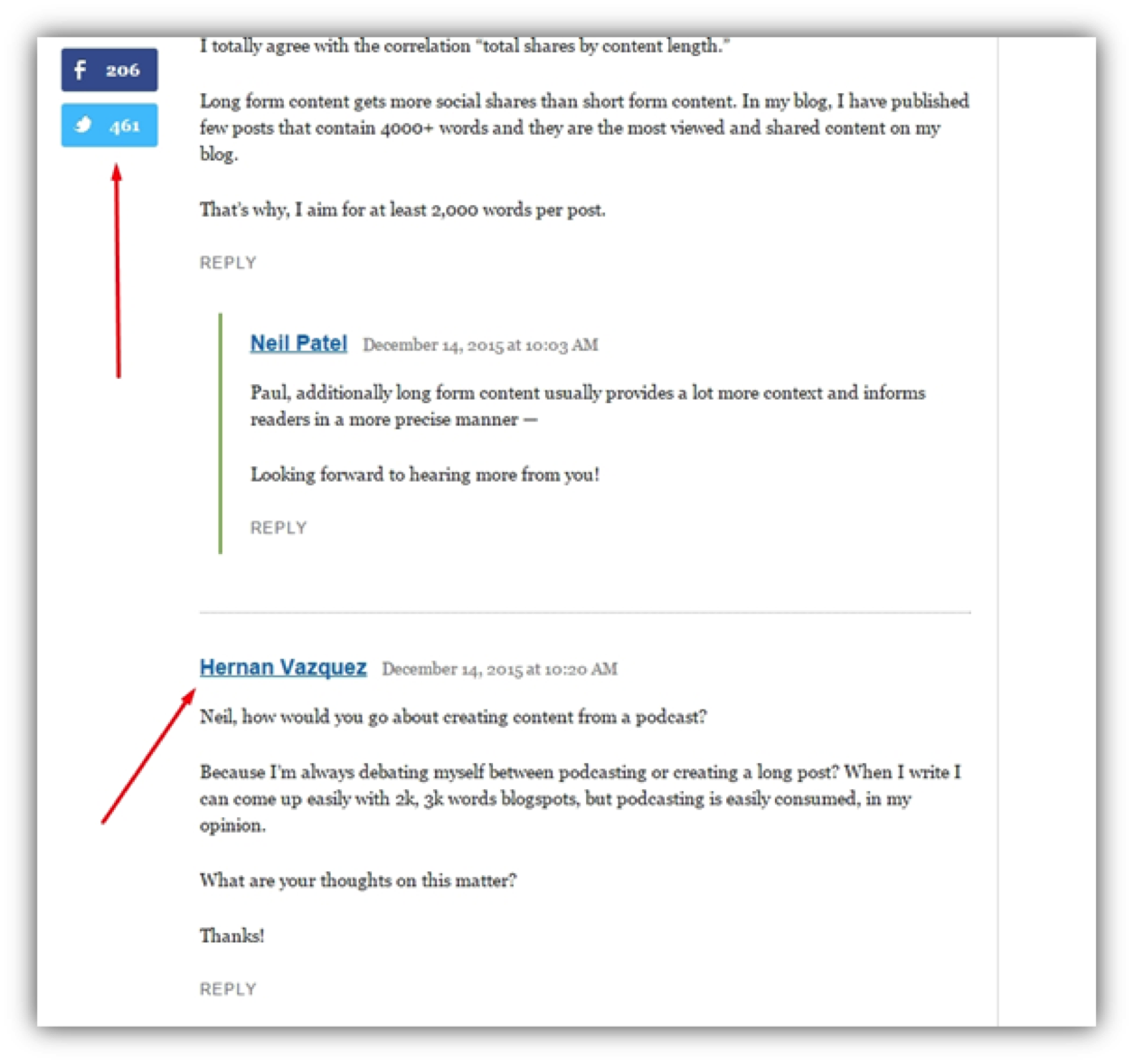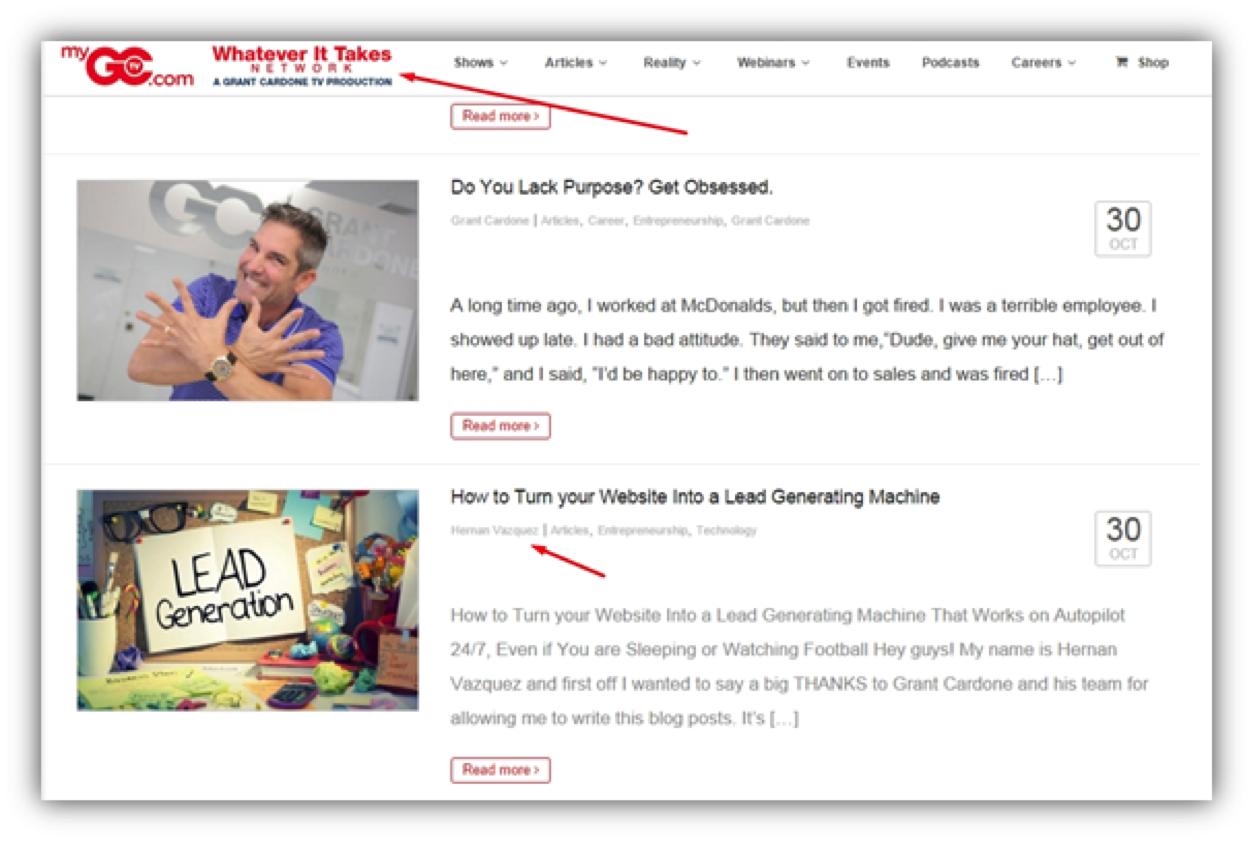by Hernan Vazquez
Are you launching a new website? Are you trying to grow traffic to your videos? Are you looking for more eyeballs on your content? Are you thinking, what's the best way to send traffic to my site? Then this article is definitely going to help you out, as it will teach you how to increase website visitors.
You see, most of the businesses out there don’t have a traffic problem. In fact, traffic is one of the easiest things to obtain in the internet world. What you may have, though, is an authority problem, and this article will show you now only how to increase website traffic you need but also how to increase your authority by doing so.
Let me tell you, though, that this is not a “push-button-get-traffic” system or technique. It does require hard work and dedication. But you can reap the benefits from these five traffic sources for years to come. The main approach here is to help your audience where your audience is gathering, solve their needs for free and build your relevance and prominence from there.
Are you ready to get some targeted free traffic? Let’s dive right into it!
What you need to do first before applying this guide
Highly targeted traffic can be used for many purposes. It can help driving sales and boost conversions on your website, it can increase your list size and it can help you bringing awareness to your nonprofit cause. However, you need to have some things in place before actually going “out there” and start applying these techniques.
As you may already know, having some sort of sales funnel/lead capture mechanism is critical. Otherwise, people will visit your page, think your content is cool and leave. And you don’t want that, do you? You need to leverage your efforts so this technique makes sense today and in the future.
So if you don’t have any sort of lead capture mechanism, opt-in bait, or offer that people get for free by leaving their email, you need to put that in your website first hand.
Step two is to have some sort of retargeting pixel in place. Ninety-five percent of the people that visit your website will not take action—it doesn’t matter what kind of traffic source or strategy you’re using. So how do you engage with that 95 percent that visited you and can potentially forget about your stuff over the next 30 minutes, let alone seconds?
That’s where retargeting comes into play. You want some sort of retargeting/remarketing pixel in place to later serve ads to those people. It doesn’t matter if you’re not planning to do a pay-per-click (PPC) campaign anytime soon. Having that pixel in place will allow you to build your “cookies list” as well as your email list (provided you implemented step one).
Now that you can keep communicating with your potential customers once they’ve left your website, this guide will show you how to generate them. So let’s move on.
My 5 favorite sources of traffic
My marketing background is mostly centered on search engine optimization (SEO). And while I still do a lot of SEO and love this source of traffic, over the years I’ve pivoted from a backlinks/rankings perspective into a traffic/conversions perspective. That’s why I’m leaving SEO out of this. However, if you’re into SEO, this guide will definitely help you out because you can get a ton of high-quality backlinks out of this. So keep reading.
As I mentioned before, this is not a “push button” strategy. This is a sustainable approach to building your brand, your website, and your traffic online. While I’ve gotten almost 6,000 visitors over the first 30 days of applying this guide (as I’ll show you later on), the opportunities that came attached to this approach are priceless.
The main idea here is that you will be actively searching where your prospects are gathering. You’ll go to them and not the other way around. You’ll research your market and find those virtual places where people have that need that your product or service solves, and you’ll be helping them to solve those needs, for free.
In return, you’ll see that your authority grows, your traffic follows, your subscribers are far more engaged with your emails and you sell a lot more with less effort. So basically you put the effort first and reap the benefits later. This is how you promote your brand in an ethical, long-lasting, long-term centered way.
Finally, let’s see what these traffic sources are:
1. Discussion boards and forums
Forums and discussion boards are a gold mine. In one website you can find A LOT of people discussing those topics that they are more passionate about. In fact, some forums and forums members are plain fanatics of a certain topic or niche. Think about motorbikes, survival, model trains, trail running, and all of those interests people have.
That’s exactly where you and your brand want to be. Discussion forums are a great way of helping people out, building your authority and having some sort of call to action, in your profile or signature for example. This technique is so powerful that I’ve launched entire websites, products, and services solely on this strategy.
What you want to do is to research some forums using Google advanced queries (as you can see in this guide) and then register an account. Your profile should be top notch, correctly branded, linked to other social profiles of yours, and include your bio. I’ve seen that people relate more to personal accounts than branded or company accounts. So use your face and name whenever possible.
Once you’ve registered your account, introduce yourself and start helping out people on those threads that you can actually participate. If you’re feeling inspired as well, you can write “The Ultimate Guide for XYZ.” This can have a huge impact on your business because those guides are truly appreciated by the forum members. Be respectful, though, do not try to “siphon” people back on your website, or you’ll be banned.
2. Communities and groups
In the same line with forums, there are communities and groups that you can leverage to grow your authority, your traffic, and your audience. On this case, you’ll be using the traffic that a platform already has (like Google Plus Communities, Facebook Groups, and LinkedIn Groups), to leverage and bring traffic to your site.
The technique still stands. Be helpful, participate, and build relationships with the group owners and prominent members. This should be fun after all! I’ve also found that exclusive deals, content, and articles work amazingly well. If you’re on Facebook, for example, being active in a big group can get you a ton of new friend requests. The same happens with Google Plus and LinkedIn.
As well as with forums, admins, moderators, and members are protective of their platforms. And most of the time they are tired of fighting off spam. So if they are suspicious that you have some sort of “hidden agenda,” you will get the boot. Grow your profile, be honest, and share your knowledge and traffic will come.
3. Blog comments
This is still a super powerful way of bringing tons of targeted traffic to your site. However, I see many SEO professionals and marketers who don’t use this because of the fear of a “Google slap.” Truth is that comments, when done massively and automatically, can become a headache and Google doesn’t like this. But I’m talking about insightful comments on relevant blogs here, not the usual automated jargon you can see yourself moderating if you have a blog (Wordpress mostly).
In order to find great blogs to comment on, I just follow influential people on social media and drop a couple of paragraphs with insights, advice, and praise on their posts. You can also use something like Alltop.com or Buzzsumo.com in order to find the hottest blogs in your niche. Remember to be respectful of the author and the audience of that blog—help first, sell later.
Most of the comments platforms will allow you to leave a link as part of your profile. Use this to send traffic back to a related article, or even to a lead magnet on your website.
4. Guest posting and outreach
Many marketers don’t like doing guest posting because it takes a lot of work. Not only do you need to pitch the blog owner on the possibility of being featured there, but then you actually need to write the thing, get it approved, edit it, etc. And some people are not friends with the written word. However, the results in terms of traffic, authority, and relationships are priceless.
And, see that I also mention “Outreach” on this particular technique? It doesn’t have to be written guest posting—you can add value to someone else’s blog in many ways. Can you make a quick video or record a podcast episode? Can you make infographics for the blog? Can you curate some of the current news and add your insight? Can you make a live broadcast with the blog owner?
I like approaching a potential collaboration as a win-win situation. This is also a means of building long-term relationships. I usually go for blogs that not only have big traffic but also that I care about the brand, the owner and the product (like Infusionsoft, which I’ve been using for ages!). Plus I like keeping in touch with the authors of such blogs as well. Some of the best collaborations and joint ventures have come out of these contacts.
Make sure that your post, video, podcast, or infographic is top notch. Some marketers will tell you that their best content is not on their own websites but on third party ones. This is an intelligent strategy, and combined with some retargeting and lead capture techniques, it can grow your base of subscribers like no other. Plus, you can use those juicy logos (with due permission of course) on your “as seen in” profile.
5. Press releases
Press releases are one of the most underused traffic generation strategies. Every time I’ve submitted a press release for syndication, I’ve gotten a spike in traffic, subscribers, and sales. Press releases are good for SEO too since you can get a lot of branded backlinks from authority sources in no time. And while this is not entirely free, I didn’t want to keep this out of the guide because it can be a powerful (and inexpensive) solution to get traffic.
So how do you leverage the power of press releases? First off, you’ll need someone to write the press release for you. They need to have a specific format and content in order to be accepted by the media outlets. They also need to be written in a journalistic and newsworthy language. Many writers in Upwork.com will help you getting your press release done.
After that, you’ll need to submit it. There are many services out there but I’ve been using Joe Hughes’ service for as long as I can remember. I’m not affiliated with him, but his services are amazing so I keep recommending it. Some press release submission services can be pricey, but Hughes’ team will actually write your press release and submit it for less than you think.
For the SEO geeks out there: Make sure you’re using branded URLs as anchor text on your backlinks. You can also link to other social profiles (like your Twitter profile, your YouTube channel, and the link) to make people also follow you on social media.
Is this worth it? What are the results?
So now you might be thinking “OK Hernan, this sounds great, but is it really worth it? Show me some results!” And that’s exactly what I’m going to do right now. This technique brought me around 5,492 visitors in the first 30 days of launching my website. This was done with zero money invested on ads or any other push (email blast, social media posts, etc.):
Once you have your base in place (meaning your website capturing emails and dropping cookies), you can go out and bring as much traffic as possible. These techniques are not easy to implement, they are not quick and definitely not scalable (as PPC would be), but they can bring a ton of targeted leads, people that are already familiar with your content and that you have helped them in the past. Let alone those connections, networking and the feeling of actually being “out there” helping people out.
Just think how much easier your sales process would be, how engaged your subscribers would be and how much more you can potentially sell. And how you’re setting the stage to become an authority figure in your market.
Hernan Vazquez is an entrepreneur and SEO and digital marketing expert who focus on bringing results to clients and students by researching and applying the latest marketing and sales funnels techniques that work. He's the co-host of Humpday Hangouts, a live and open SEO Q&A, (Wednesdays at 4 p.m. EST).











